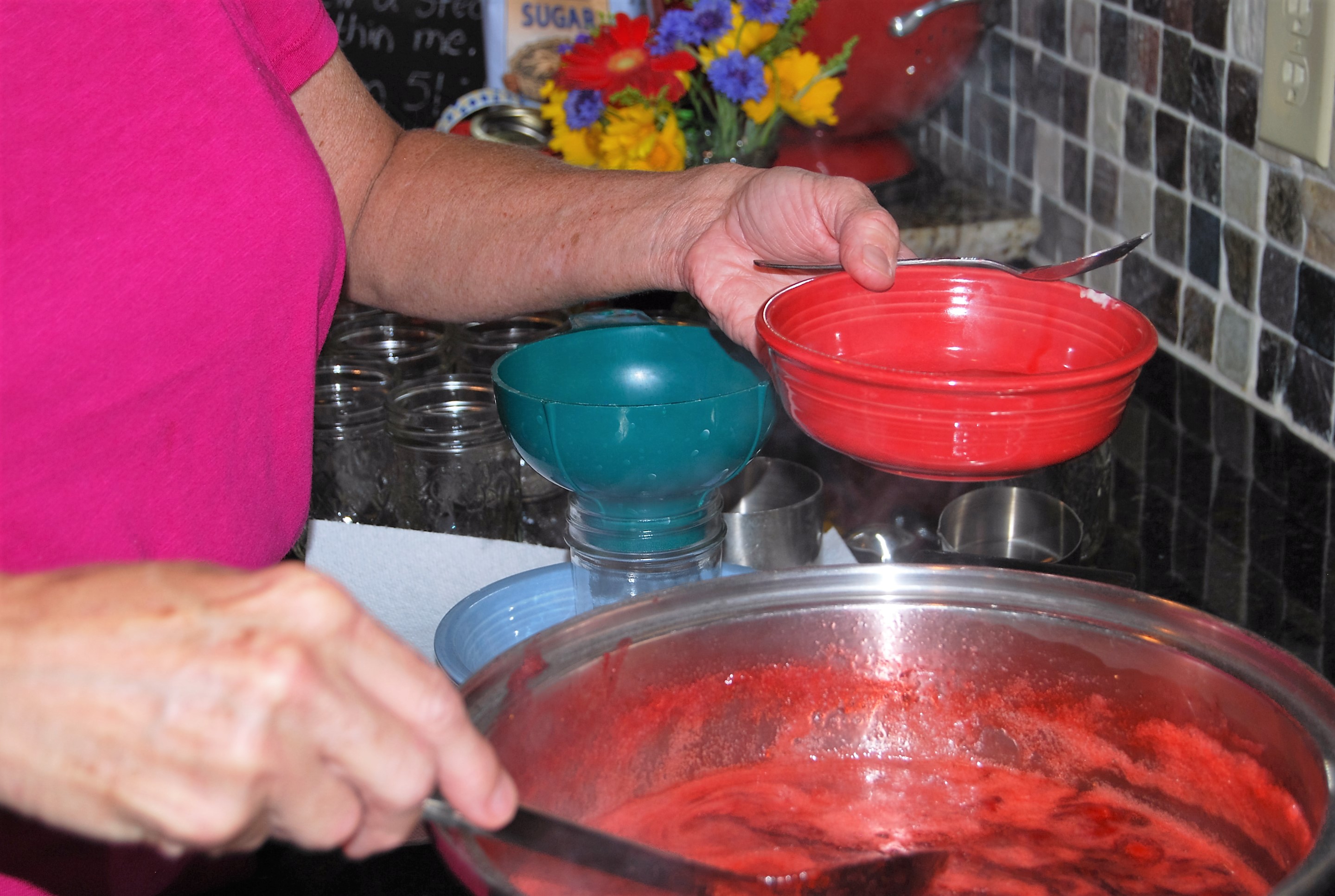CULLMAN – Growing, harvesting and preserving your own food can be rewarding on many levels. For starters, it gives you more control over what goes in your food, allowing you to control salt and sugar content, as well as avoiding preservatives, chemicals and pesticides.
Jan Gillespie was raised on homegrown/canned foods. It was just natural for her to continue the practice when she had a family of her own. Nothing goes to waste, everything is used, even the peels for compost.
Jan recommends that novice canners consult with their state extension service when learning to preserve foods. They frequently offer classes that teach you everything you need to know in order to preserve your food safely and effectively.
She also stresses that beginners do some research, read books, labels on canning equipment, and consult with experienced canners before trying it on their own.
“Certain foods can only be safely preserved by using a pressure canner,” Jan explained. “Others can be prepared in a water bath.”
Jan adheres to proven methods of preserving foods. She sterilizes her jars and other utensils in the dishwasher, keeping them hot until ready for use. She boils the lids for her jars on the stove top.
Stressing the need to work quickly, she recommends that you lay out your ingredients, equipment and prepared fruits and vegetables ahead of time, so that you won’t waste time looking for them later.
Jan grows almost every single thing that she uses, although some things, like strawberries, are bought in bulk from a local farmer’s market. She uses the fresh strawberries for jellies, jams and preserves. Her method for making strawberry preserves is shown below. This is a great recipe for beginners.
Having laid out her equipment, and ingredients as outlined above, she cleans the strawberries, laying them on paper towels to drain. Jan saves the tops of the berries, along with any overripe fruit, for her compost.
She then crushes the berries to equal five cups so that there will be fruit, as well as clear juice, when she pours the hot mixture into the jars.
In a stainless, five-quart sauce pan, add berries and one box of Sure-Jell, stirring well. Adding half-a-teaspoon of unsalted butter to the crushed berries helps to reduce foaming.
On high heat, bring mixture to a full rolling boil, stirring constantly (a boil that doesn’t stop bubbling after stirring). At this point, she adds seven cups of pre-measured sugar. Return to a rolling boil, continue to stir constantly.
Boil for exactly one minute after mixture returns to full boil. Jan always uses a timer for accuracy. Remove from heat, and skim off foam with a metal spoon.
Removing the hot jars from the dishwasher, Jan then carefully pours the jelly into each sterilized jar, using a wide mouth funnel designed for canning. Jan uses the tip of a sterile spoon to remove any foam or bubbles from each filled jar.
She cleans the top of each jar to remove any excess. Removing the lids from their pan on the stove using tongs for safety, she dries the lids carefully with a clean towel.
Next, she puts a lid on each jar, then adjusts the rings as tightly as possible to ensure a good seal. As the jars cool, you should hear a pop as each lid seals securely.
Jan has learned that canning also saves time when you are ready to prepare a meal, even though the process of canning can take considerable time, depending on what you are canning.
For instance, in addition to fruits, Jan cans dried beans, turnip greens, green beans, both white and sweet potatoes, tomatoes, spaghetti sauce, slaw, kraut, chicken broth, soups and chili beans, so that when she wants to serve them at a meal, all she has to do is simply open up the jar and heat the contents.
The food is prepared with no preservatives or chemicals of any kind, and following the instructions on her recipe allows her to serve these preserved foods with confidence. In addition to being healthy, they also retain their flavor better than canned foods from the grocery shelf.
She grows and dries cayenne and jalapeño peppers, sage, oregano, dill seed, rosemary and basil, for use in seasoning her canned goods.
“My grandmother had six children,” said Jan. “It was her goal each year to preserve 100 quarts of everything she grew so that her family could eat well during the winter and until the next garden came in. There was no Wal-Mart in those days, people either saved their own food or they did without.”
Supply list:
- Dry measuring cup
- Liquid measuring cup
- Two large bowls
- 5-7-quart saucepan
- Ladle
- Jars
- Lids
- Seals



















